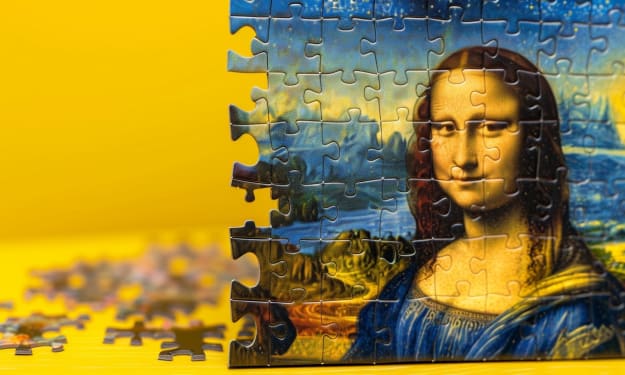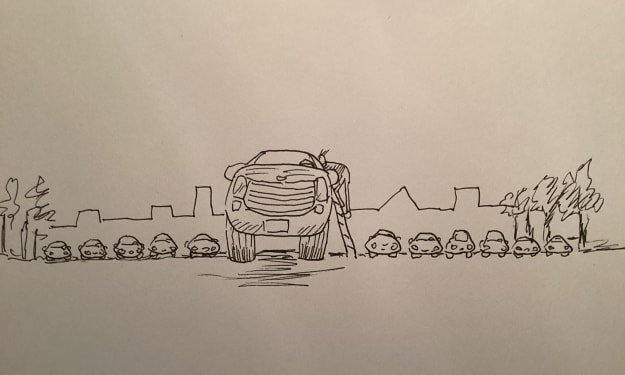The Art of Bouncing Light and Painting Rainbows: A Kaleidoscopic Adventure in Physics Education
When Optics Met Canvas and They Decided to Make a Meme

Alright, buckle up, folks! We're about to dive into the wild, wacky world of Light and Color: Optics through Visual Art; and trust me, it's going to be a ride crazier than that time your favorite reality TV star tried to explain quantum mechanics on TikTok. Picture this: physics education with art, where prisms and paintbrushes collide in an epic battle of nerdiness and creativity. It's like if Picasso and Einstein had a love child who was obsessed with Instagram filters and laser light shows.
First things first, let's talk about light. You know, that stuff that lets you see your phone screen and binge-watch the latest superhero movie. Light is like the ultimate party crasher, bouncing off walls, slipping through windows, and playing tricks with your eyes. But what if we told you that you could use art to make light behave like a well-trained poodle at a dog show? Enter prisms, lenses, and mirrors – the holy trinity of light manipulation.
Imagine an art installation where a giant disco ball meets a laser light show meets a funhouse mirror maze. That's right, we're talking about using these optical gadgets to create interactive art experiences that demonstrate the behavior of light in ways that would make even Da Vinci say, "Damn, I wish I thought of that." Picture a room where every angle you look at shows a different rainbow, thanks to prisms breaking down light into its constituent colors. It's like being inside a Pink Floyd album cover, but way more educational.
Now, let's get into some serious art geekery with color theory. You know those color wheels that look like they belong in a kindergarten classroom? They're actually the secret keys to understanding the physics of light and the electromagnetic spectrum. Each color we see corresponds to a different wavelength of light, and artists have been using this knowledge to mess with our brains for centuries. It's like when you finally realize that "The Dress" was both blue and black and white and gold – your mind is blown, right?
Take, for example, the works of Claude Monet. This dude wasn't just slapping paint on canvas; he was basically conducting a physics experiment. His use of color and light to depict the same scene at different times of day was like a Victorian-era Instagram filter. Monet was out there flexing his knowledge of how light interacts with the environment, creating masterpieces that double as science lessons. Who knew that a bunch of water lilies could be so educational?
But let's not stop at paintings. Photography is another perfect playground for exploring light and color. Ever seen those long-exposure photos of cityscapes where car lights turn into beautiful streaks of color? That's light in motion, baby! And it's all thanks to the magic of physics. Photographers are like modern-day wizards, capturing the ethereal beauty of light behaving badly. And don't even get me started on holography – it's like Star Wars came to life and decided to crash your art class.
Speaking of sci-fi, let's talk about refraction and dispersion – sounds fancy, right? But it's basically what happens when light decides to break dance through different materials. Think of a prism again, but this time, it's like light is auditioning for "America's Got Talent," showing off its ability to split into a spectrum of colors. Artists can use this phenomenon to create installations where light morphs and changes as you move around, making you feel like you're in a trippy music video. It's like Willy Wonka's chocolate factory, but with more physics and less chance of being turned into a blueberry.
And don't even get me started on diffraction. That's when light decides to go all "Matrix" on us and bend around obstacles. Artists can use this to create pieces where light and shadow play games with your perception, making you question reality itself. Imagine a sculpture where light breaks apart and reassembles into a rainbow every time you walk past it. It's like those optical illusions that make you doubt your sanity but way more Instagrammable.
Let's also give a shoutout to those avant-garde artists who use lenses and mirrors to mess with our heads. Ever seen an infinity mirror? It's like stepping into a portal to another dimension, where your reflection goes on forever. These artists are basically turning physics into an art form, making us see the world in ways we never thought possible. It's like if "Inception" had a baby with a funhouse.
And let's not forget the role of color theory in all of this. Artists have been using the principles of light and color to evoke emotions and tell stories for centuries. From the warm, inviting hues of a sunset to the cold, eerie glow of a full moon, color has the power to transform a piece of art into a powerful experience. By understanding the physics behind color, artists can create works that resonate on a deeper level, making us feel like we're part of something bigger than ourselves.
In the end, blending physics education with art isn't just about making science pretty – it's about making it accessible, engaging, and downright fun. It's like combining the best of both worlds: the logical, methodical world of science and the wild, unpredictable world of art. It's like watching Bill Nye team up with Bob Ross for the ultimate crossover episode.
So, the next time you see a rainbow, a dazzling light show, or an optical illusion, remember that it's not just a feast for your eyes – it's a testament to the incredible interplay between light, color, and art. And who knows? Maybe one day, you'll be the one creating an interactive art installation that makes people say, "Wow, I never knew physics could be this cool!"
There you have it, folks! We've taken a rollercoaster ride through the zany, technicolor world of light, color, and optics in visual art. We've seen how prisms, lenses, and mirrors can turn a mundane room into a psychedelic wonderland, and how artists can harness the physics of light to create mind-bending masterpieces. So, the next time you're gazing at a painting or snapping a photo, remember: you're not just looking at art – you're witnessing the dazzling dance of physics and creativity.
About the Creator
ScienceStyled
Exploring the cosmos through the lens of art & fiction! 🚀🎨 ScienceStyled makes learning a masterpiece, blending cutting-edge science with iconic artistic styles. Join us on a journey where education meets imagination! 🔬✨
Enjoyed the story? Support the Creator.
Subscribe for free to receive all their stories in your feed. You could also pledge your support or give them a one-off tip, letting them know you appreciate their work.






Comments
There are no comments for this story
Be the first to respond and start the conversation.